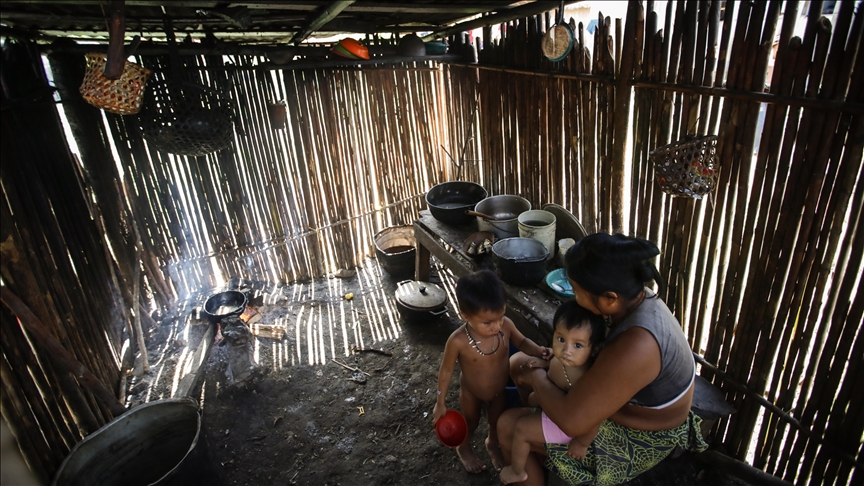
ANKARA
An estimated 476 million Indigenous people live around the globe – making up about 5% of the overall population – yet they account for 15% of the world’s poor, and live more difficult lives than non-Indigenous people, according to figures from the UN and NGO research.
Anadolu Agency compiled information on Indigenous peoples living in various parts of the world from UN data and the Indigenous World-2022 report of the International Work Group for Indigenous Affairs (IWGIA), a Danish-based NGO.
According to UN data, there are more than 476 million Indigenous people living in 90 countries around the world.
Indigenous people speak most of the world's 7,000 languages and represent 5,000 different cultures.
Aug. 9, which in 1982 saw the first meeting of the UN Working Group on Indigenous Populations, was later declared International World Indigenous Peoples Day. Celebrations are held on this day in many parts of the world.
The theme of the day this year is “the role of Indigenous women in the preservation and transmission of traditional knowledge.”
In this context, at an online commemoration event, women representatives of Indigenous societies will share their experiences with the preservation and revitalization of knowledge in their own societies, and their role in transferring traditional ancestral culture.
Over 86% work in informal economy
Statistics on Indigenous people reveal the hardship of their living conditions.
Indigenous people generally lead more difficult lives than the rest of the world due to the destruction of their habitats and violence against them.
According to the UN, the average life expectancy of Indigenous people is 20 years less than that of members of non-Indigenous communities.
UN statistics reveal that more than 86% of Indigenous people globally work in the informal economy, compared to 66% of non-Indigenous people.
Notably, Indigenous people are nearly three times more likely to live in extreme poverty than non-Indigenous people.
Globally, 47% of all Indigenous people in employment are uneducated, while 17% of non-Indigenous people are. The difference is even greater for women.
Effects of COVID-19 pandemic on Indigenous people
Indigenous peoples are at the forefront of the communities most affected by COVID-19 epidemic, which started to affect the whole world in early 2020.
Indigenous people suffered from the pandemic in terms of both health and economically.
The international work group report revealed that human rights defenders fighting for Indigenous rights have also become targets.
Some 59% of the 358 human rights defenders killed in 2021 were people fighting for the rights of Indigenous peoples.
Country with the most Indigenous people: China
According to work group data, 88% of the population of Greenland is Indigenous, along with 80% of French Polynesia, 48% of Bolivia, 43.8% of Guatemala, and 36% of Nepal.
Asia stands out as the continent with the most Indigenous people.
An estimated 112 million Indigenous people live in China alone, making it the country with the largest number of Indigenous people.
China is followed by India with 104 million and Indonesia with 60 million.
* Writing by Seda Sevencan
Anadolu Agency website contains only a portion of the news stories offered to subscribers in the AA News Broadcasting System (HAS), and in summarized form. Please contact us for subscription options.


